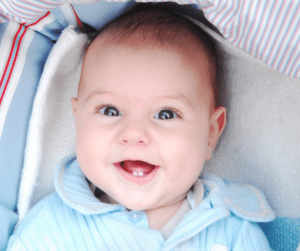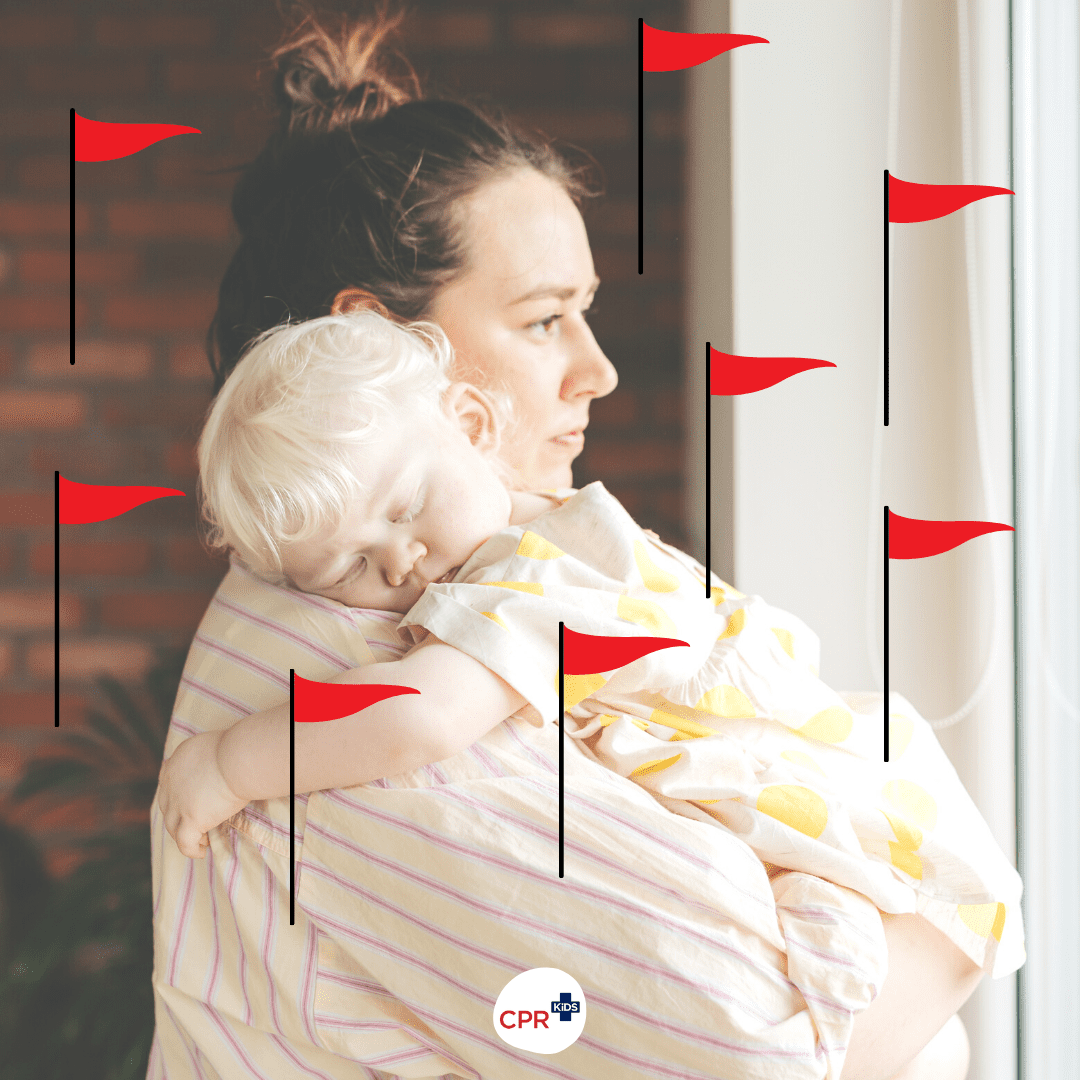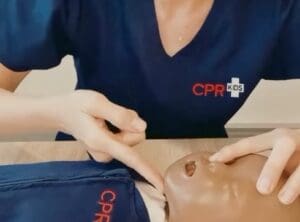
What do I do if my child sustains a dental injury?
Knowing what to do when your child sustains a dental injury, has a huge impact on the severity of the injury, and the recovery.

‘Red flags’ are the really concerning signs and symptoms when your child is sick, that indicate the need for urgent medical help.
As parents and carers, we often know the ‘cut and dry’ incidents for when an ambulance needs to be called, like a funnel-web spider bite, or if your child is unconscious.
When little ones get sick they can be generally unwell… but you need to trust your gut. You know best, and you can tell if something is just not right or if your little one is just not themselves.
This is a big one – we suggest watching our video on ‘breathing difficulties in children’ for further explanation and visual examples of what abnormal or distressed breathing can look like.
Breathing faster than normal, if your baby’s nostrils are flaring, head bobbing, sucking in under their rib cage, tummy see-sawing, sucking in around the neck, abnormal breathing sounds and coughing/breathlessness, are all indications of breathing difficulties. There can be many reasons a baby is struggling to breathe or breathing faster than normal, but regardless of the cause, this is a red flag.
One of the things you may notice when your child becomes unwell is that they are refusing/not wanting to have their feeds. Babies can get dehydrated very quickly. If their feeding has dropped off quickly or consistently and they are refusing to feed, that is a red flag.
Not producing enough urine is concerning. If your child is unwell and has not been passing some urine every 6 hours you should see a doctor to check if they are becoming dehydrated.
Is baby floppy? Can they be easily roused? If bub is lethargic and drowsy when it isn’t their normal sleep time, or is unresponsive, urgent medical attention is needed.
If your little one has a weak cry, absence of a cry, or if they have a high-pitched, continuous cry and are unusually unsettled/unable to be consoled, urgent medical attention is needed.
If a rash doesn’t disappear when pressed, this is described as a non-blanching rash (watch our demonstration for testing this, here), this can be a sign of serious illness (you have probably heard that this can be a sign of meningococcal infection, but there are other causes too). However, in most cases, you will see other red flags before a rash like this appears – don’t wait for a rash if you are seeing other red flags.
If your child has a fever and a rash of any type (apart from a non-blanching rash – that is a medical emergency!), the Royal Children’s Hospital states in their rashes fact sheet “Often the viral infection causing the rash will also cause your child to have a fever . The fever often happens at the start of the illness, before the rash appears. When the rash appears, it means your child is getting better. However, if your child has a fever with their rash, take them to see your GP.”


In older children, we look at the child as a whole and not just the number (their temperature) – but in babies from 0 to 3 months old, a temperature of 38 degrees or higher is an automatic trip to the hospital! Even if they are not showing any other signs of being sick.
A change from their normal skin colour. If they are blue (this could present on their lips, torso, nail beds etc), this is a medical emergency. They may also become very pale compared to their usual colour, or even grey.
Mottled skin – If your child’s skin is mottled and they are not normally like that, this is a concern. Note that mottling can be normal for babies, and for some children in cold weather etc. – but you know what is ‘normal’ for your child better than anyone. Remember that!

This one is capitalised for a reason – because it is so so important. If your gut feeling is telling you that something is wrong, then TRUST that and ACT on it. Don’t underestimate your ability to pick up that something is not right with your child, and that they need urgent medical attention.
The above information can be viewed in video format here
Reference
‘A Life. A Finger. A Pea Up a Nose’
CPR KIDS essential First Aid Guide for Babies and Children
Sydney Children’s Hospital Network Recognition of serious illness fact sheet https://www.schn.health.nsw.gov.au/fact-sheets/recognition-of-serious-illness-in-children
RCH Rashes Fact sheet https://www.rch.org.au/kidsinfo/fact_sheets/rashes/

Knowing what to do when your child sustains a dental injury, has a huge impact on the severity of the injury, and the recovery.


Kids put more than their fingers up their nose – know the steps to safely remove objects before your child hides something up there!